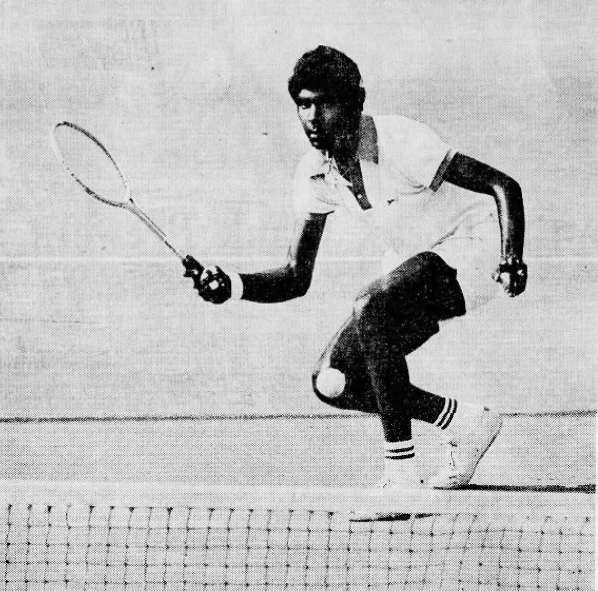If you can make it anywhere, you can make it there, right? By September 1973, Vijay Amritraj had proven himself just about everywhere except New York. The 19-year-old from Madras was polite, charming, and absolutely brimming with confidence.
In April, Amritraj had taken on most of the Australian Davis Cup team–and won. In July, he saved three match points at Bretton Woods to upset his hero, the great Rod Laver. He won the title at that event after wriggling out of another two match points to defeat Jimmy Connors.
The young Indian had once scraped together pennies to watch the great Rocket in person. He had scraped together a lot more pennies to fly to Las Vegas and study with long-time pro champion Richard González. Amritraj drew comparisons to both, with a powerful serve, athletic net play, and an uncanny ability to put his half-volleys on the baseline.
After another escape act at Forest Hills–this one in the second round against South African Pat Cramer–Vijay earned a date in the round of 32 against the 35-year-old Laver.
The showdown, on September 1st, was a duel for the ages. At Bretton Woods, Laver had just returned from injury. Now he played like the Rocket of old, having dropped just ten games in six sets. Both men were particularly sharp on the return of serve, delivering a captivating roller-coaster of a match with one service break after another.
Amritraj landed the opening salvo, seizing a first-set tiebreak on a pair of Laver errors. The Australian responded quickly, evening the score with a 6-2 second frame. Late in the third, Vijay started to establish an edge in the key moments. He saved two break points to hold for 5-4. A few minutes later, he smashed a return winner to take the set.
“I just get a little tentative on the big points now,” said Laver. Still, he had always played best from behind. He took another 6-2 set to force a decider, then broke to open the fifth.
The crowd, which had supported the underdog early on, divided into even camps. Now that Laver was in a fight, he reminded fans of the thrilling matches that had given him the championships in 1962 and 1969. He was no longer the same man: Three times he fell on the slippery grass, each time looking every day of his 35 years when he got back up. That just made him more likable. Even Amritraj applauded some of Rocket’s best shots.
A light rain, which had accompanied much of the match, started falling harder. Thunder could be heard in the distance. Neither player wanted to stop; after tournament referee Mike Blanchard conferred with them at 2-all in the fifth, the contest continued. Laver merely opted to change into spikes.
Both men stayed aggressive, hoping that luck would lean their way. “It was roulette on that wet grass,” Rocket said. Somehow, the advantage remained with the returners. Each time Laver broke to take the lead, Vijay struck back. The pair combined for only three service holds in the final set.
After three hours of brilliant volleys, the stalemate was broken with a terrible one. At 4-5, 15-all, the Australian kicked a serve into Vijay’s body, earning a weak reply. It was the sort of sitter Laver had put away thousands of times. But for some reason, he couldn’t see it well. Instead of an easy winner, he smacked a line drive to the backstop. What he called “the 101st volley of the day” gave his opponent the edge.
Laver almost salvaged the situation, winning the next two points. But his earlier miscue had left Amritraj an opening, and the Indian took it. From 40-30, Vijay slashed two return winners. He went for broke until the very end, converting his first match point with another unplayable service return. The final score was 7-6(3), 2-6, 6-4, 2-6, 6-4.
“I knew I was lucky to beat him the first time,” Amritraj said. “I just wanted to give him another good match.”
With Laver and Ilie Năstase out of contention, a reporter asked 1967 champion John Newcombe to assess the remaining field. Newk listed some favorites: Tom Okker, Stan Smith, Arthur Ashe, Ken Rosewall, and Wimbledon champion Jan Kodeš.
The top seeds had fallen out of his own half, and Newcombe thought of one other name. “I like myself, too.”
* * *
This post is part of my series about the 1973 season, Battles, Boycotts, and Breakouts. Keep up with the project by checking the TennisAbstract.com front page, which shows an up-to-date Table of Contents after I post each installment.
You can also subscribe to the blog to receive each new post by email:
